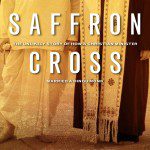Lectionary Reflections for the Fourth Sunday in Lent – March 30, 2014
I Samuel 16:1-13
Psalm 23
Ephesians 5:8-14
John 9:1-41
Today’s scriptures speak of light and darkness, and sight and blindness. They are metaphorical in nature, and must be understood in terms of the full humanity of persons of color and sight-impaired people. Darkness is not synonymous with evil: it is also the place of growth and gestation. Too often we have universalized spiritual states to the detriment of marginalized peoples.
In the story of David’s anointing as king, Samuel participates in both divine disingenuousness and divine inspiration. Worried about his well-being, Samuel wants to hide his visit from King Saul. Seeking to protect his servant, God tells Samuel to go Jesse’s family under the ruse of sacrificing a heifer. When he arrives at Jesse’s house, he is shown the most likely candidates for king, but none of them suit God. Instead, God directs him to the youngest and least experienced of Jesse’s sons. Samuel and David discover that God’s vision differs from our own. God sees possibility in the most unlikely of places. Whether in an adverse situation or an unexpected encounter, all things can become vehicles of divine revelation and all persons can reveal the holy to those who have eyes to see.
The shepherd Psalm 23 involves a transformed vision of reality. Circumstances can be challenging, yet we can still experience God’s peace and know that it is well with our souls. Most readers see the comforting aspects of the Psalm and fail to notice that the Psalmist is traveling through the darkest valley and is feasting with enemies all around. Psalm 23 is a Hebraic version of the Celtic caim or encircling: in which one draws a circle around oneself, pivots in a clockwise direction, and invokes a prayer of protection. Many of life’s challenges will not go away, but we can experience God’s presence and a peace that passes all understanding in the midst of turmoil and threat.
Ephesians 5 invites us to become children of the light, forsaking the pathways of darkness and evil and following God’s luminous adventures. We embrace and become God’s light to the world as Christ’s followers and should behave accordingly. Those who awaken to Christ’s pathway of wholeness and integrity will experience Christ’s light shining on them and, dare we say, in their cells as well as their souls. In the meantime, our vocation is to live faithfully, act lovingly, and walk in the light, for the brevity of our lives calls us to make the most of each day.
The life God has given us is wonderful and should be savored, moment by moment along life’s way.
John 9 is about light and darkness and healing and wholeness. First of all, this healing story challenges the acts-consequences understanding of suffering. In this understanding, there is a direct and linear relationship between what we do and what happens to us: the good prosper and enjoy health; the evil suffer and become diseased.
Jesus addresses the problem of evil, in response to a peculiar question, “Who sinned, this man or his parents that he was born blind?” This question raises a variety of further questions:
Is the suffering of children fully attributable to their parents’ impact, whether in terms of DNA, quality of relationship, or economics?
Is this man suffering from the prenatal behaviors of his parents or some prenatal act on his part?
Does this passage suggest a first century, barely articulated, version of reincarnation?
Jesus does not give a direct answer, despite his undermining of the traditional theodicies of inexorable karma from past lives and this-worldly linear understandings of health and illness. Jesus notes that God will be glorified in the curing of the man’s blindness. He is not an object of God’s wrath or a moral lesson to others; his healing is the important thing, both in terms of his own well-being and its witness to God’s amazing love.
Similar to the passage from Ephesians, Jesus tells his disciples to walk in the light, doing works of healing, while it is still day. Time is short and our lives are brief: acts of healing cannot be put off until tomorrow. When suffering is around us, the solution to the problem of evil is our partnership with God in bringing comfort and cure.
The problem of evil is a theological issue and challenges us to reflect on the nature of the God-world relation and the extent of God’s power in the determining the events of our lives. Although his words raise theological issues, Jesus’ solution is more practical: confront suffering, ease suffering, and cure suffering. Two thousand years later, “Mr. Rogers” made a similar comment: “When I was a boy and I would see scary things in the news, my mother would say to me, ‘Look for the helpers. You will always find people who are helping.’”
I need to mention the methodology of healing: Jesus uses mud to cure the man’s blindness. Mud is a poultice and a form of therapy in ancient societies. Jesus uses faith and ordinary medicine to cure blindness. Prayer and medicine are companions. God uses energy work and laying on of hands; God also uses medication and surgery. Wherever there is healing, God is its source. (For more on healing, see my books Healing Marks: Healing and Spirituality in Mark’s Gospel; Healing Worship: Purpose and Practice; God’s Touch: Faith, Wholeness, and the Healing Miracles of Jesus.)
The passage, if read in its entirety, concludes with a long and convoluted conversation between certain religious leaders, the man, and his parents. The religious leaders are unable to accept the healing. This healing act of Jesus does not conform to their understanding of religious propriety. God doesn’t heal on the Sabbath, they assert. Healing occurs in prescribed ways and times, they claim. Anything else cannot come from God. But, divine healing is always surprising and not limited by human rituals and institutions.
Today’s readings challenge us to walk in the light. God is with us in threatening times and God’s circle of love surrounds us. In living light-filled lives, we tap into resources beyond our imagination for the good of ourselves and the world.














